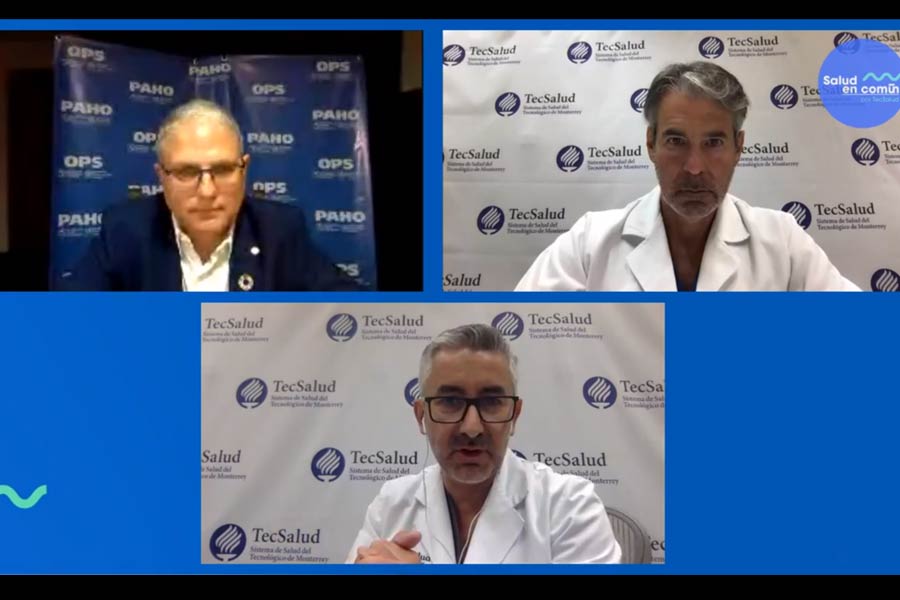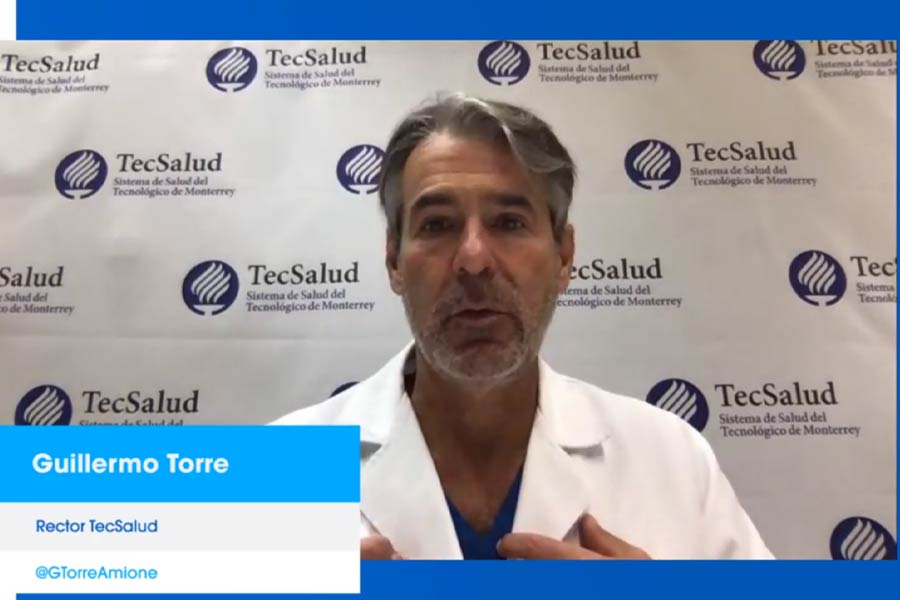Cover photo: AFP
Cristian Morales, leader of the World Health Organization (PAHO/WHO) in Mexico, said that he didn’t expect there to be a vaccine against COVID-19 next year and, if one is discovered, it will only be given to a small part of the population.
“2021 is going to be a year without vaccines. We hope that one will be discovered in 2021, but that does not mean that we have the capacity to distribute it in a single campaign for 120 million people. That is not going to happen in 2021,” he said.
In the webinar “Pandemic: a global perspective about the problem”, given by TecSalud, he said that hospital retrofitting and other actions had prevented the Mexican health care system from collapse. However, he said that it has deficiencies which have been causing problems for decades.
“Mexico has a very old-fashioned health system (...) tremendously inefficient, and focused on highly specialized hospitals, which means setting aside primary care,” he said.
Dr. Guillermo Torre, Rector of TecSalud, also took part in the talk, which was moderated by Dr. Fernando Castilleja, Director of Wellbeing and Prevention at TecSalud. They gave an account of the challenges that COVID-19 has caused globally.

No vaccine expected in Mexico until 2022
Morales said that in the event that a vaccine is discovered in 2021, only a portion of the population would be given it.
“Hopefully, we will get 20% of the population vaccinated, if one is found in 2021.
“We’re looking at 2022 or 2023 to eventually exit the COVID-19 pandemic,” he said.
He pointed out that we cannot only continue with lockdown as a preventative measure; the health system also needs to implement a proactive strategy of tracking COVID-19 cases in communities before they increase in severity.
To implement this type of strategy, he said that antigenic tests, which detect COVID-19 cases quickly, need to be brought to Mexico; only thus will the system be able to control and treat cases in the absence of a vaccine.

Morales said that since 2016, Mexico and other countries in the region have already made progress by working with the PAHO to better organize themselves in the event of a health emergency by creating more resilient health systems.
“We were a very long way from both universal coverage and universal access to health care, and from being adequately prepared for a situation like the one that occurred.
“It’s very difficult to speak of success when there have been 91,000 deaths in Mexico. However, part of what was achieved is that the health system did not collapse as we thought it might, based on what was happening in Europe,” Morales said.
He said that this was due to deployment by the authorities and inclusion of the PAHO and the WHO in decision-making, a hospital retrofitting rate of 389% between February and July, and a reduction of 60% in population movement across the 32 states.
“We must be very clear on that. We were totally overwhelmed by a virus that moved around world at an impressive speed, something unprecedented in the history of humanity,” Morales added.
“We must be very clear on that. We were totally overwhelmed by a virus that moved around world at an impressive speed, something unprecedented in the history of humanity.”

The diagnosis: the Mexican health system was overwhelmed
Morales pointed out that efforts should be focused on improving the level of primary care and thinking about a universal health system that guarantees access and coverage, not only for COVID-19 but other problems that affect the Mexican mortality rate.
“In Mexico, people die unnecessarily from malaria, tuberculosis, Chagas disease, maternal mortality, and many other things that shouldn’t happen in a country which is the 13th most important global economic power but still do,” he said.
“Any health system that just waits for patients to arrive, even if it has lots of ventilators or has done a lot of hospital retrofitting, is always going to be a failure,” he shared.
“In addition to high-quality health care systems, it’s necessary to have the capacity to create policies that promote health across all areas, and which can impact social and environmental health factors,” Morales added.
The WHO representative in Mexico said that dialog is important so as to be able to define the best actions that allow the greatest number of lives to be saved during what remains of the pandemic.
“This is an opportunity to come to a great consensus with entrepreneurs, with the private sector and non-profit organizations, with civil society organizations, etc., to make progress towards modern, universal, and resilient health systems,” said Morales.

An unprecedented struggle for health systems
For Dr. Torre, the pandemic has caused the largest health crisis that our country has faced in years: something that was not contemplated in the early months of 2020.
“If we go back to January or February of this year, we thought it was very far off. We talked about China, what had happened with SARS and MERS, but then it went to Europe, to Italy. Then it arrived in Spain.
“When we saw it getting closer, reaching the United States, and the WHO declared it (a pandemic), I had a very legitimate concern about what we were going to do about our health care provision,” recalled the TecSalud rector.
Dr. Torre described the public health system in Mexico as fragile, as a result of the difference in the percentage of COVID-19 patient deaths across the public and private sectors.
“In the private health sector, we have a mortality rate of 10%, which we have also seen in some segments of the public sector, but our largest health provider in the country (the IMSS) has a mortality rate of between 40 and 50%.
“We need to pause, look at the experiences of other countries and our own, accept that we have a fragile system, and ask ourselves how we can improve it. We need to improve community health,” said Torre.
To do this, he suggests having the necessary medical equipment and trained personnel in more hospitals, so that the public sector can offer patients a higher standard of care.
He added that there were three major challenges for the Tec’s health system:
- The role of the doctor in patient management.
- How to provide treatment strategies to the population as a health care provider.
- How to influence the creation of a health care policy at national level.

A call to strengthen the culture of care
Dr. Torre proposed the creation a strategy that develops a health care culture for communities.
He said that this would involve making members of the community the spokespersons for a culture of prevention using well-known practices, such as hand washing, wearing face masks, and avoiding large gatherings.
“We have to change the global strategy: we need to focus on prevention, on wellbeing, to avoid complications in everything that is preventable (...) the key is how to exploit community networks,” added Dr. Torre.
Torre concluded by talking about the importance of having an impact on public health policies in order to make decisions for the future that focus on people’s wellbeing.
YOU SHOULD ALSO READ:





